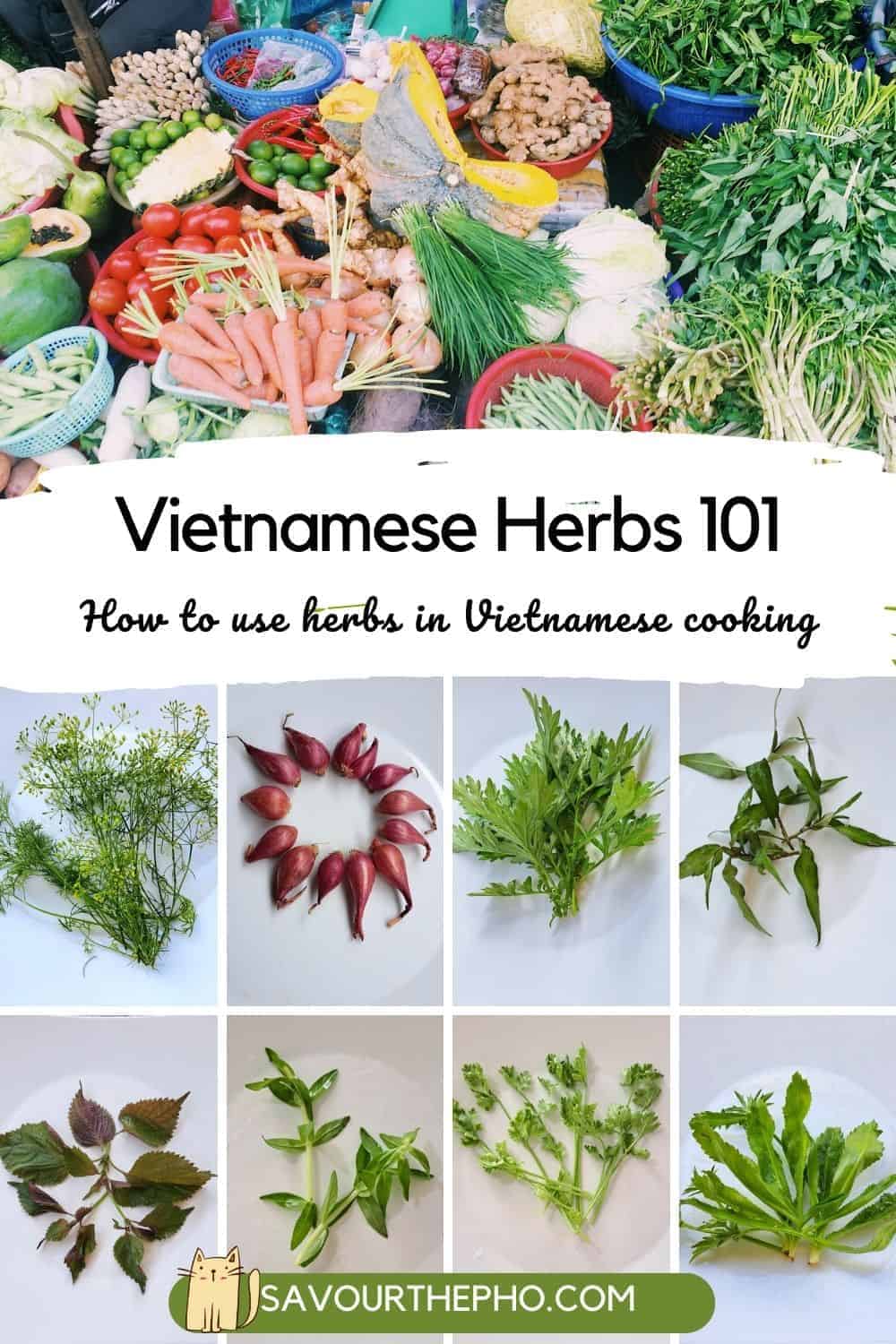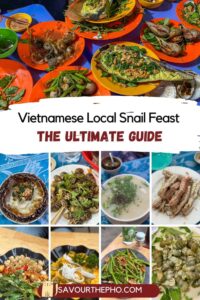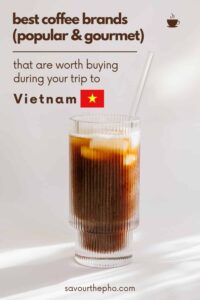Ube and taro are often mistaken for each other, but these two purple roots couldn’t be more different. From color and flavor to how they shine in the kitchen, here’s everything you need to know to tell them apart.
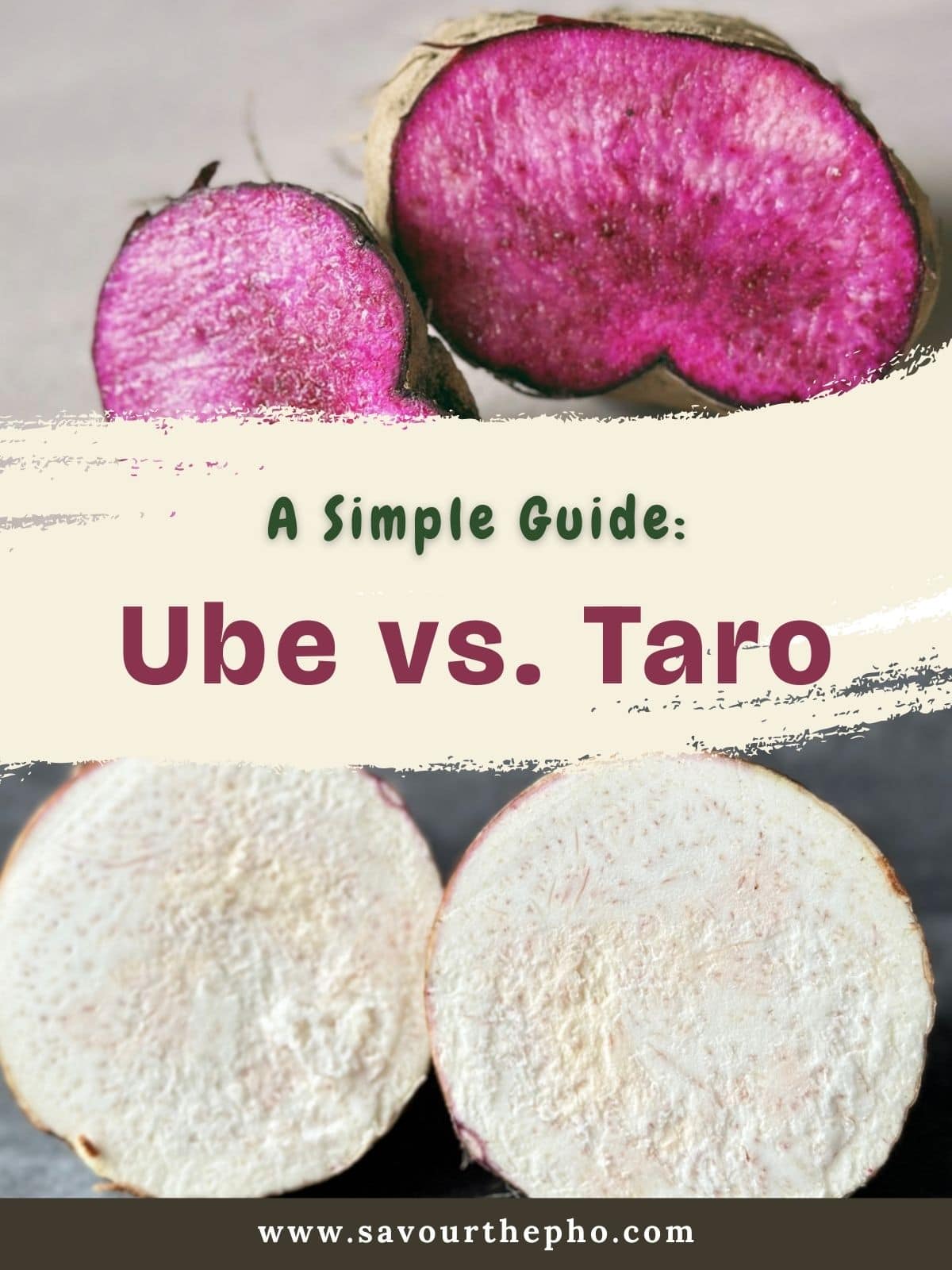
What is Ube?
Ube, or purple yam, is a Southeast Asian root most adored in the Philippines for many dreamy ube-flavored desserts.
On the outside, it looks rugged with rough, bark-like skin, but slice it open and you’ll find flesh that ranges from soft lavender to deep violet. Naturally moist and creamy, ube has a sweet, nutty flavor with subtle hints of vanilla.


Most people know ube from desserts—ube halaya, ube chiffon cakes, or ube ice cream. But in my homeland, Vietnam, ube (Khoai Mỡ) is more often cooked into savory dishes like Canh Khoai Mỡ (ube soup) or fried into Bánh Khoai Mỡ (golden, bouncy balls).
It’s an everyday root for us, fresh, cheap and common—though in the West it usually shows up frozen, and sometimes even mistaken for purple sweet potato.
If you’re curious about more veggies in Vietnamese and Asian cooking, take a peek at my post on popular Vietnamese vegetables.
More recipes with Ube
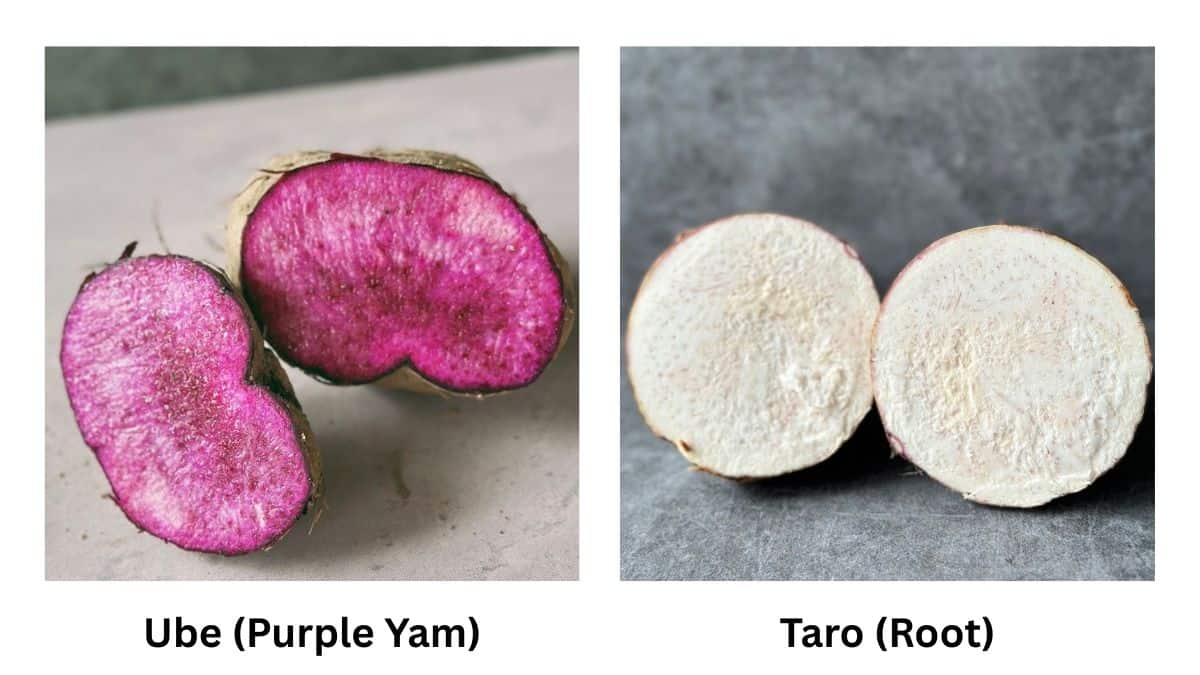
What is Taro?
Taro, on the other hand, isn’t a yam at all. It’s a root vegetable that has traveled across Asia, Africa, and the Pacific Islands. It’s a true traveler—you’ll find it in Chinese and Southeast Asian kitchens, but also in Hawaiian cooking.
On the outside, taro looks pretty humble with its brown, fibrous skin and little “hairy” roots. Slice it open and the flesh is usually white or pale lavender, often sprinkled with tiny purple flecks. The taste? Earthy, nutty, starchy, and less sweet than ube.
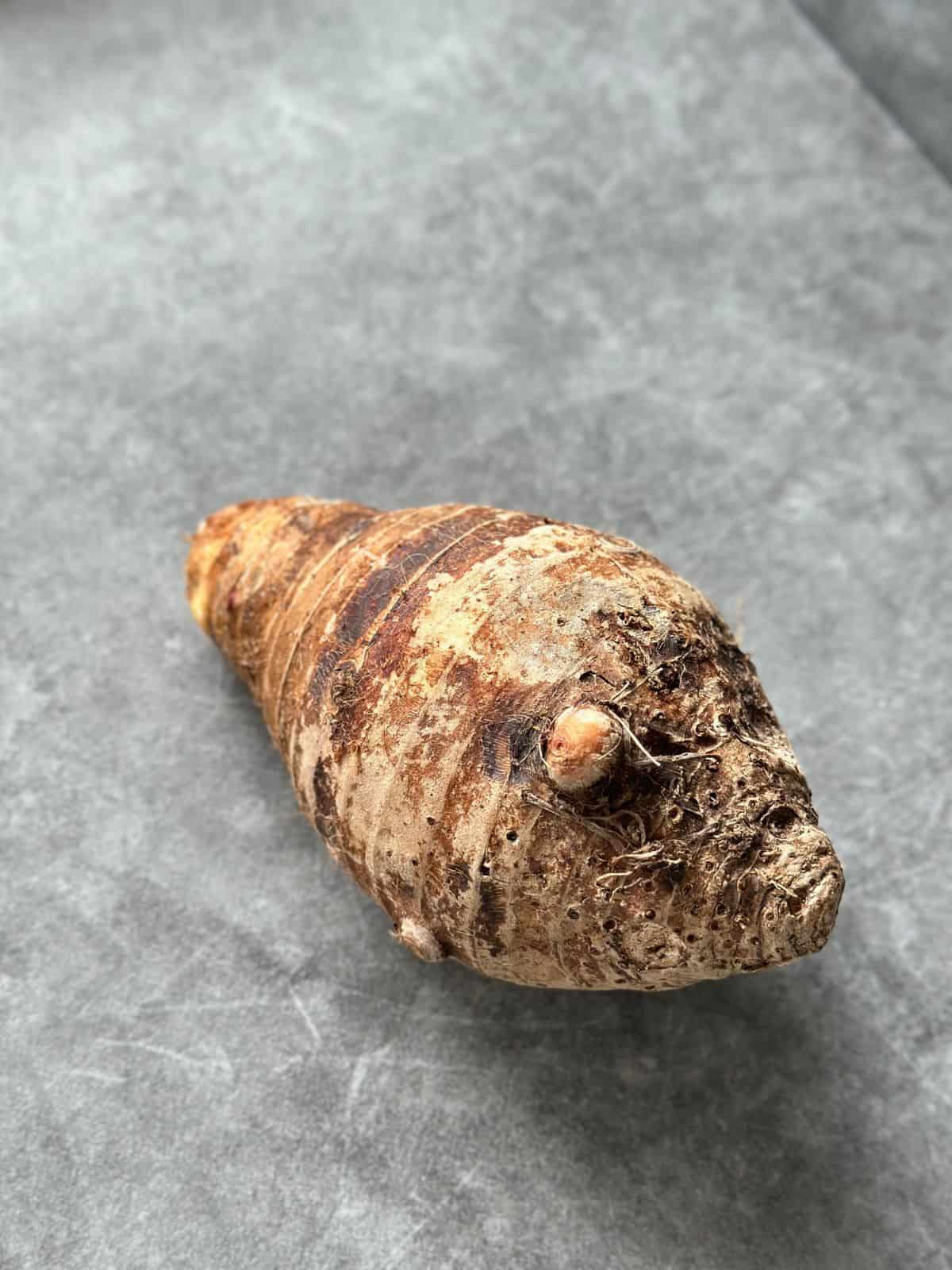
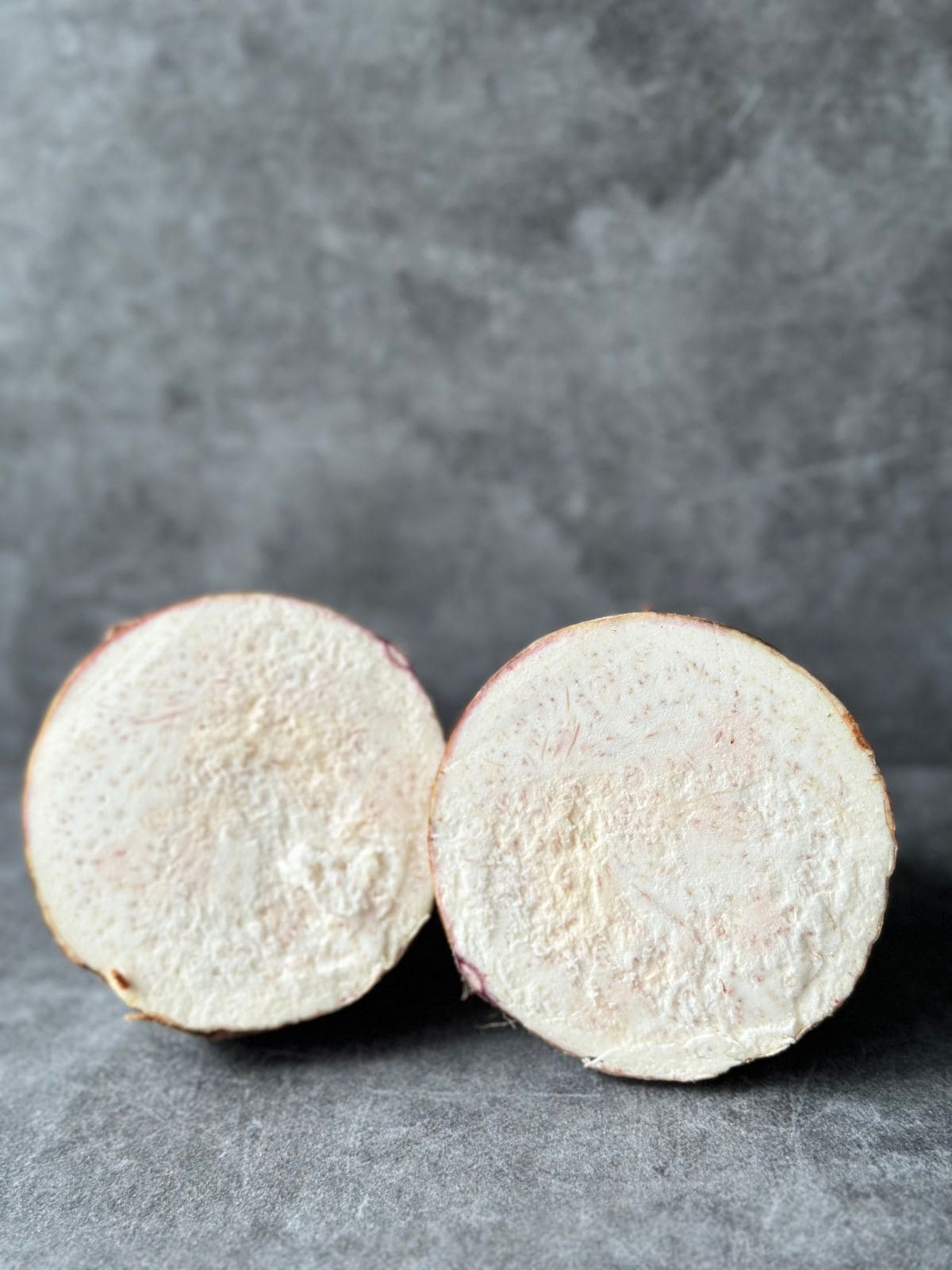
Note: raw taro can make your hands itchy because it contains calcium oxalate crystals—but once cooked, it’s deliciously comforting.
In Vietnam, we call it Khoai Môn. The most common kind, Khoai Môn Cao, has white flesh with purple flecks. Then there’s Khoai Môn Sáp with creamy yellow flesh, and Khoai Sọ (Eddoe), the smaller bulbs with white flesh.
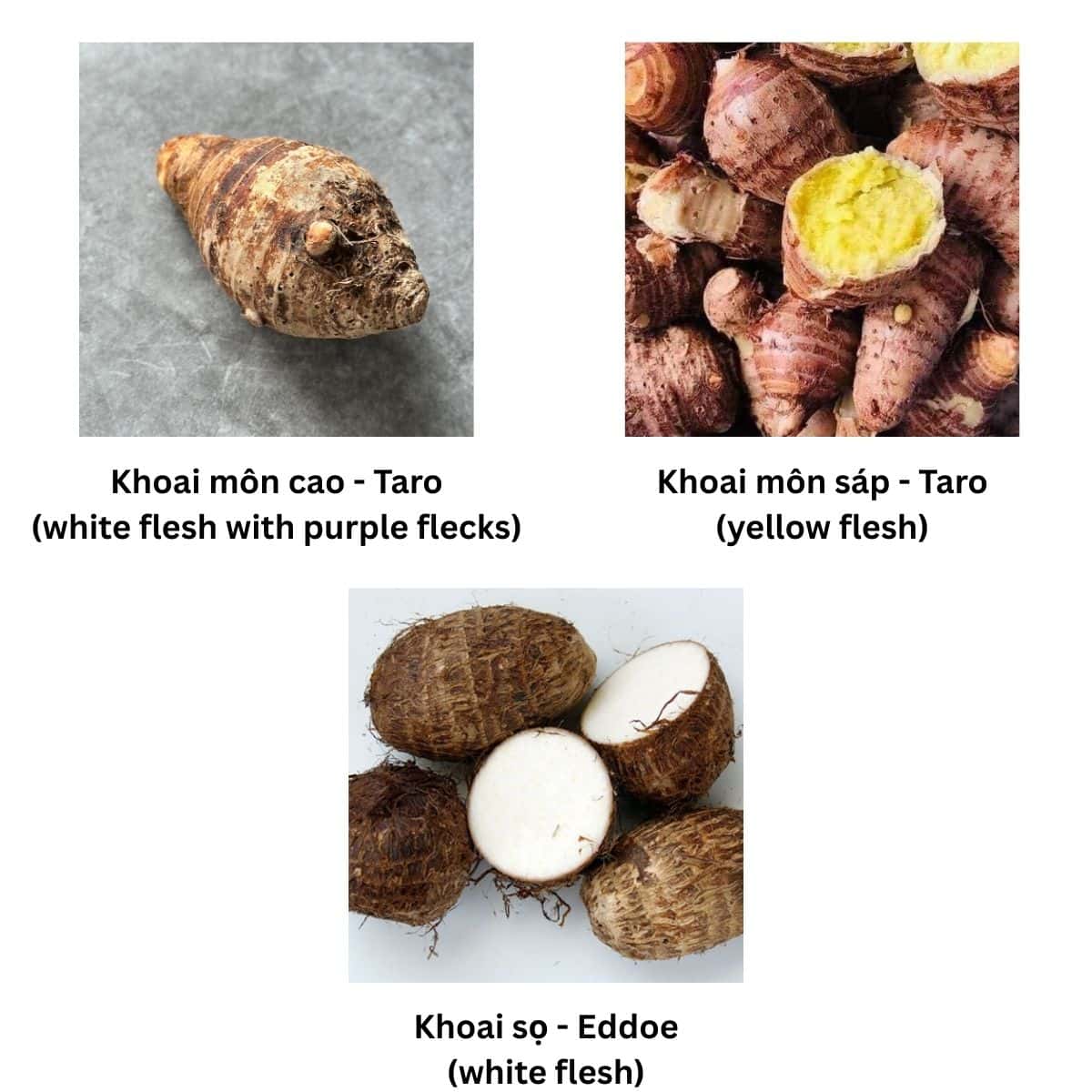
We use taro everywhere—in savory dishes like Cà Ri Gà (chicken curry), in sweet treats like Chè Khoai Môn (taro pudding), and even tucked into Chả Giò (egg rolls).
Beyond Vietnam, taro shows up in dim sum, taro ice cream, and of course, the famous taro milk tea.
More recipes with Taro
Taro Balls (for Desserts)
Taro Steamed Buns
Taro Smoothie
Ube vs. Taro
Both ube and taro are staples in Asian kitchens. Ube is all about that vibrant color and sweet, dessert-friendly flavor, while taro leans savory but still shines in sweets.
In Asian markets, finding them fresh can be tricky—both are rare and often pricey. More often, you’ll see them in the freezer aisle. Ube usually comes grated and ready for making desserts, though you have to watch out—some frozen packs are actually mixed with purple sweet potato.
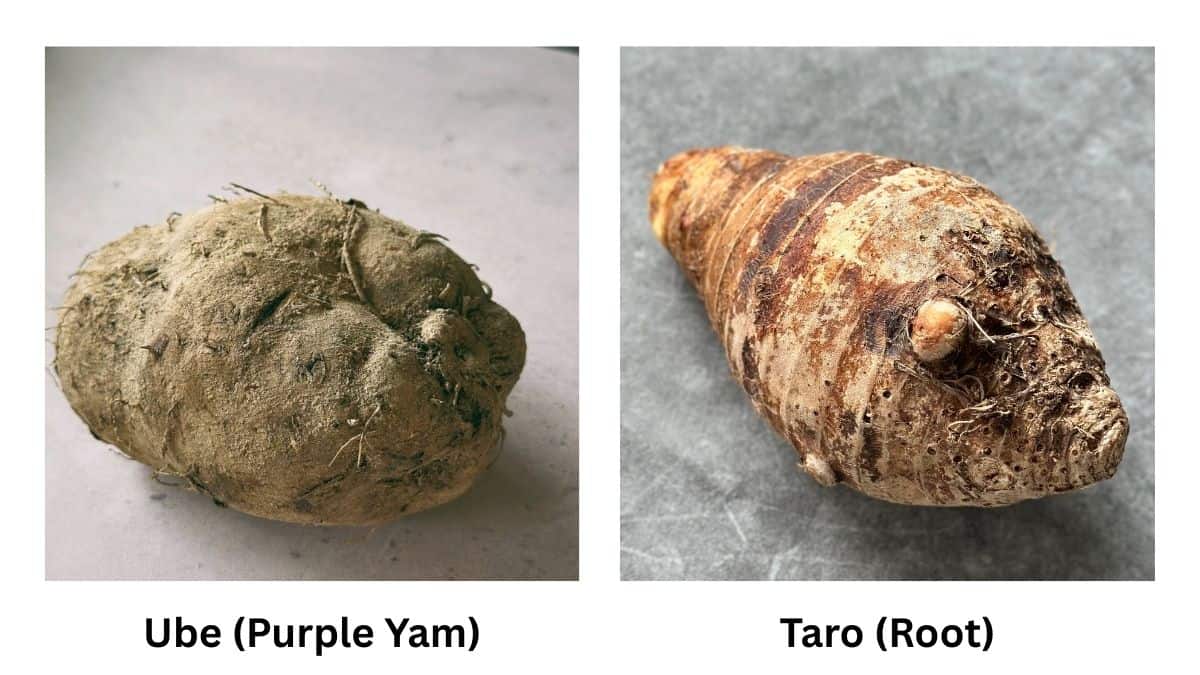
Taro, on the other hand, is usually sold peeled and cut into halves, easy to toss into both savory and sweet dishes.

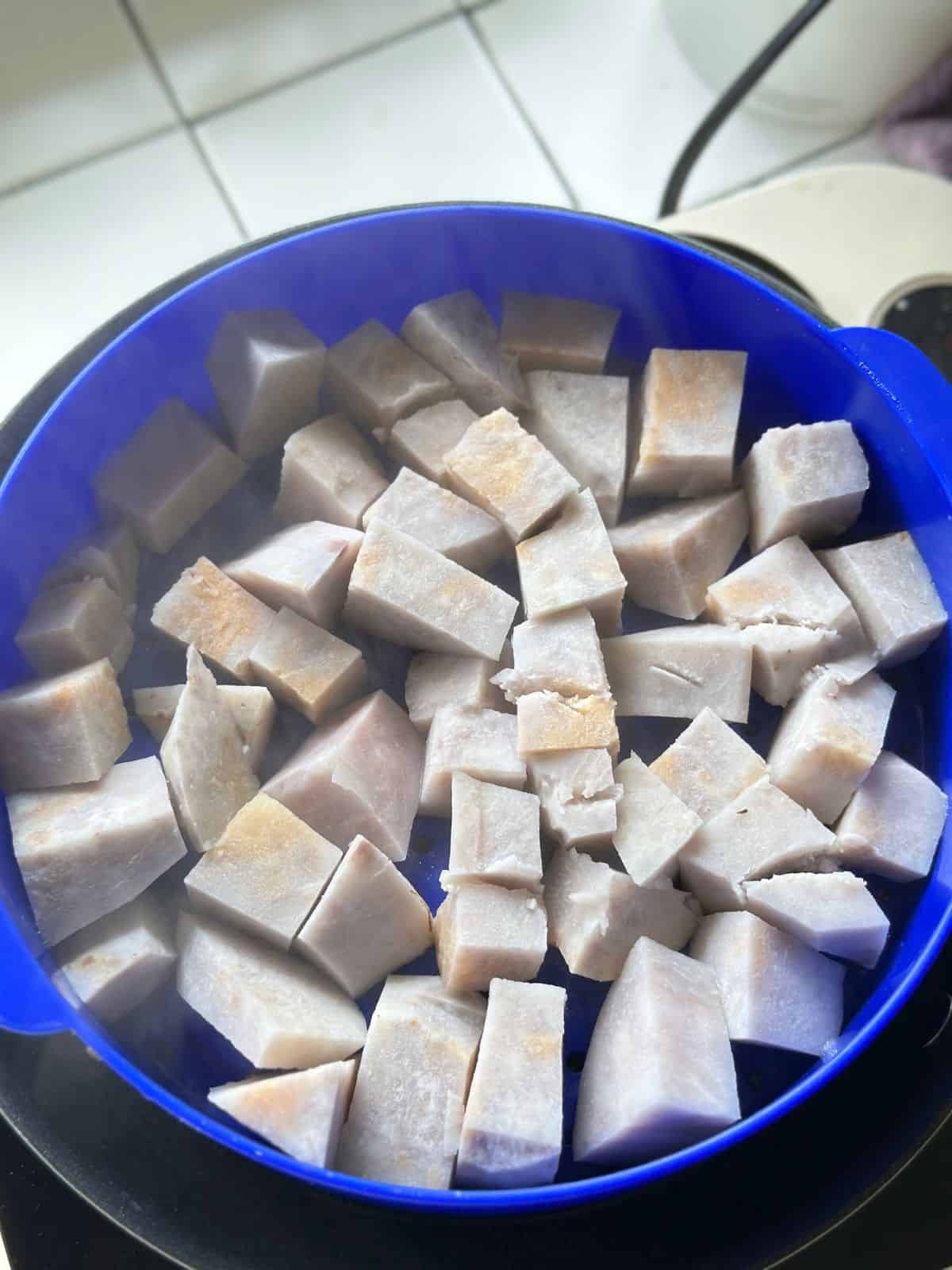
These days, you’ll find both popping up in Asian bakeries and dessert shops, right alongside other beloved flavors like matcha, pandan, and Vietnamese coffee.
FAQs
More fun bites of Vietnamese and Asian food culture
